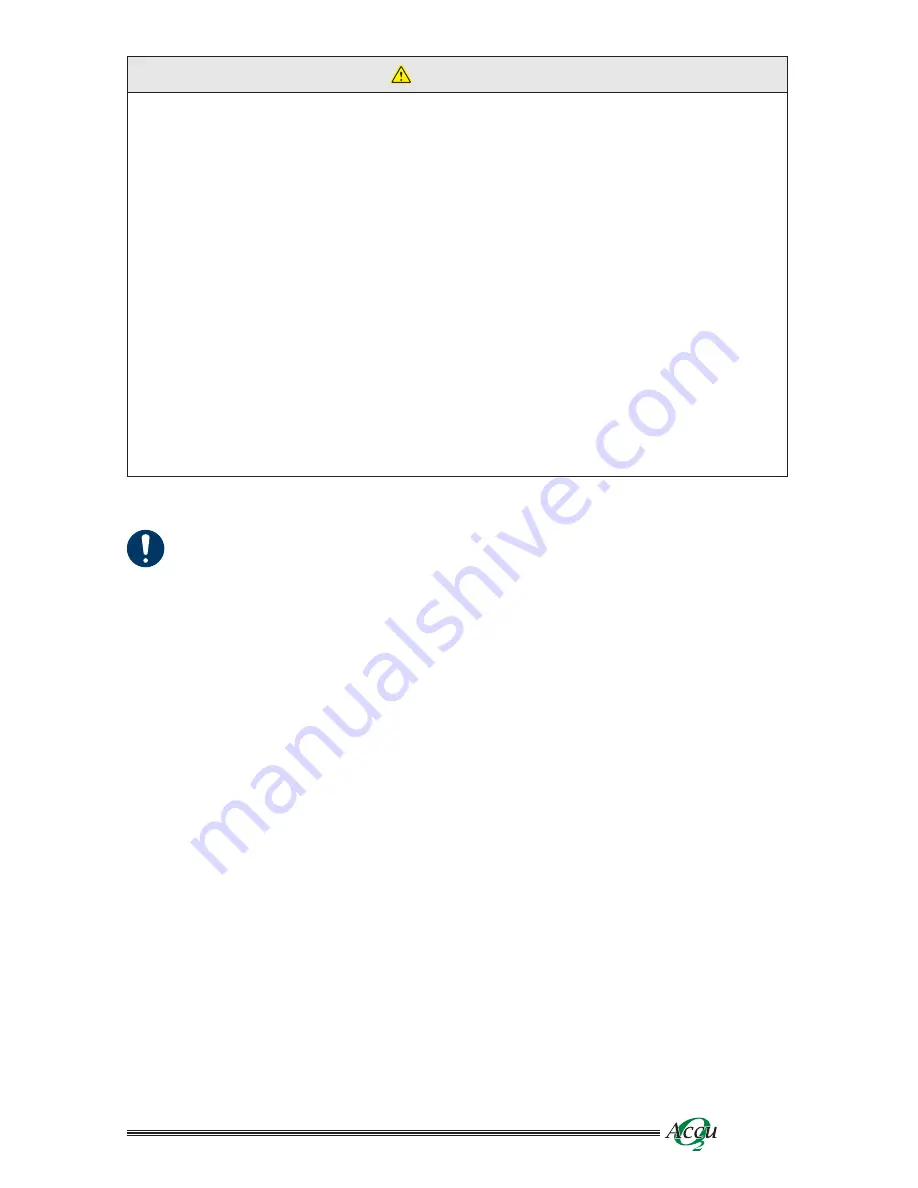
11
Oxygen
Analyzer
CAUTION
• Calibrate the Oxygen Analyzer before each use, and when
replacing the Oxygen Sensor or the batteries.
• To ensure accuracy, the Precision Medical Oxygen Analyzer
should only be calibrated using 100% Oxygen. Using any other
concentration will result in possible inaccurate readings.
• Air calibration is not recommended unless the Sensor can be
exposed to a known source of clean air. Hospital room air is
often enriched with excess oxygen.
• Calibrate the Oxygen Analyzer at a pressure and flow similar to
your application.
• Before calibrating the Oxygen Analyzer, the oxygen
concentration readout should be stable and not drifting more
than 0.2%.
• DO NOT calibrate the Oxygen Analyzer in humidified gas.
CALIBRATION
New calibration is required when;
Ø
The measured O
2
percentage in 100% O
2
is below
97.0% O
2
.
Ø
The measured O
2
percentage in 100% O
2
is above
100.0% O
2
.
Ø
The CAL reminder Icon is activated on the LCD.
Ø
If you are unsure about the displayed O
2
percentage.
A simple calibration may be made with the Sensor open to
static ambient air. For optimum accuracy Precision Medical Inc.
recommends that the Sensor be placed in a closed loop oxygen circuit
where gas flow is moving across the sensor in a controlled manner.
Calibrate with the same type of circuit and flow that you will use in
taking your readings.
1. Follow Sensor Installation instructions above.
2. Attach an open-ended reservoir to the end of the Tee Adapter.
Start flow of 100% oxygen at a pressure and flow similar to your
application.
Ø
Six to 10 inches of corrugated tubing works well as a
reservoir.








































